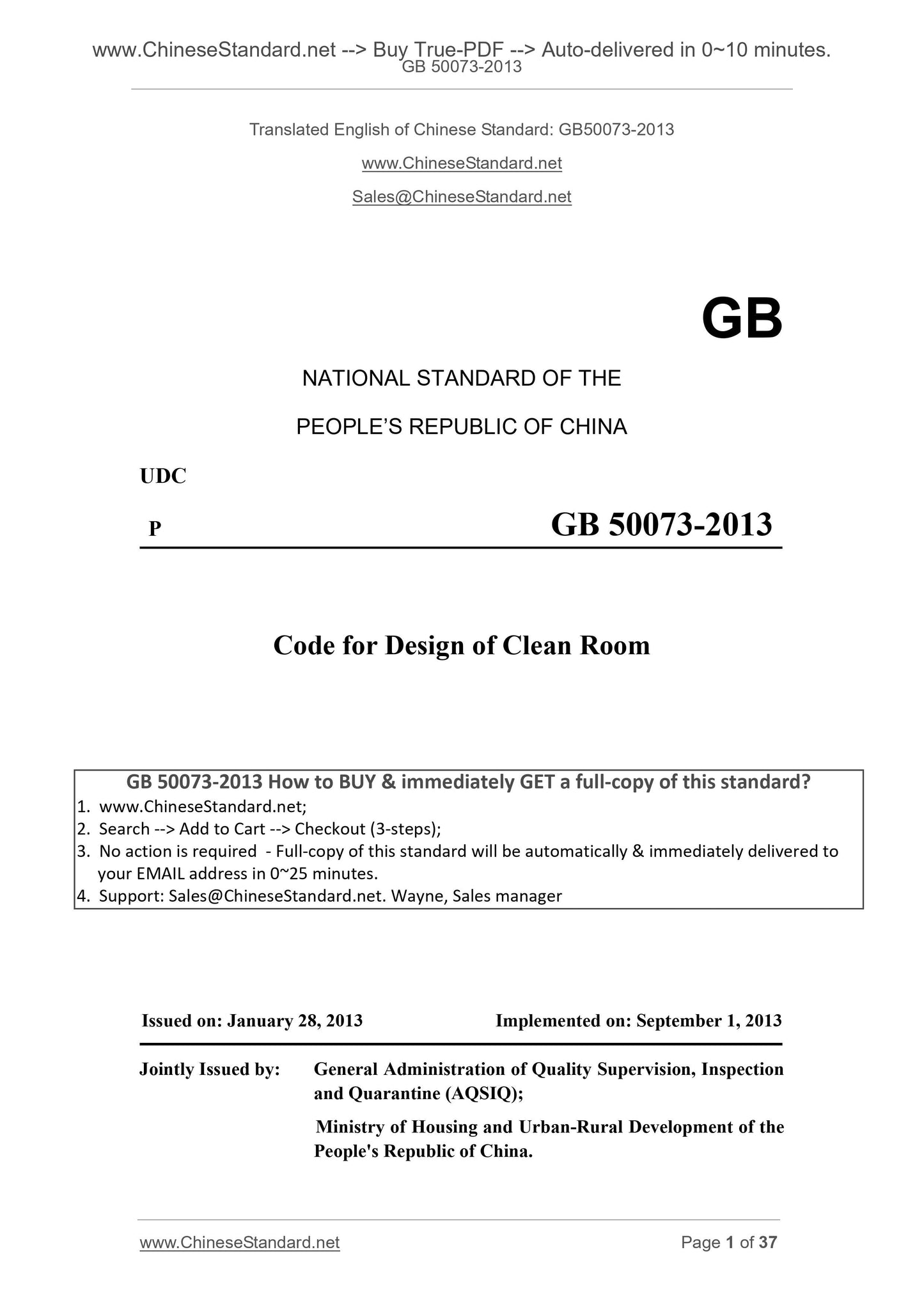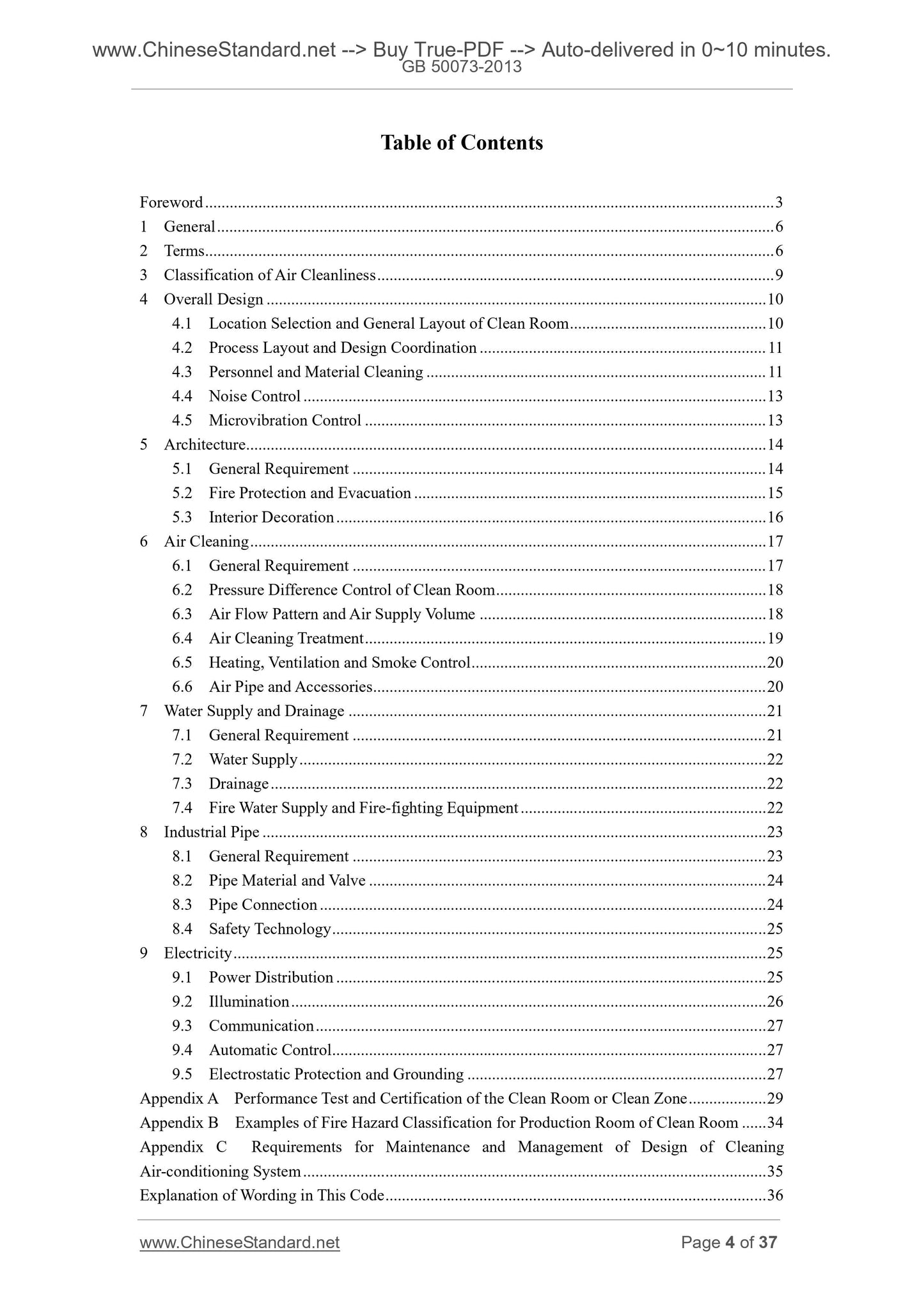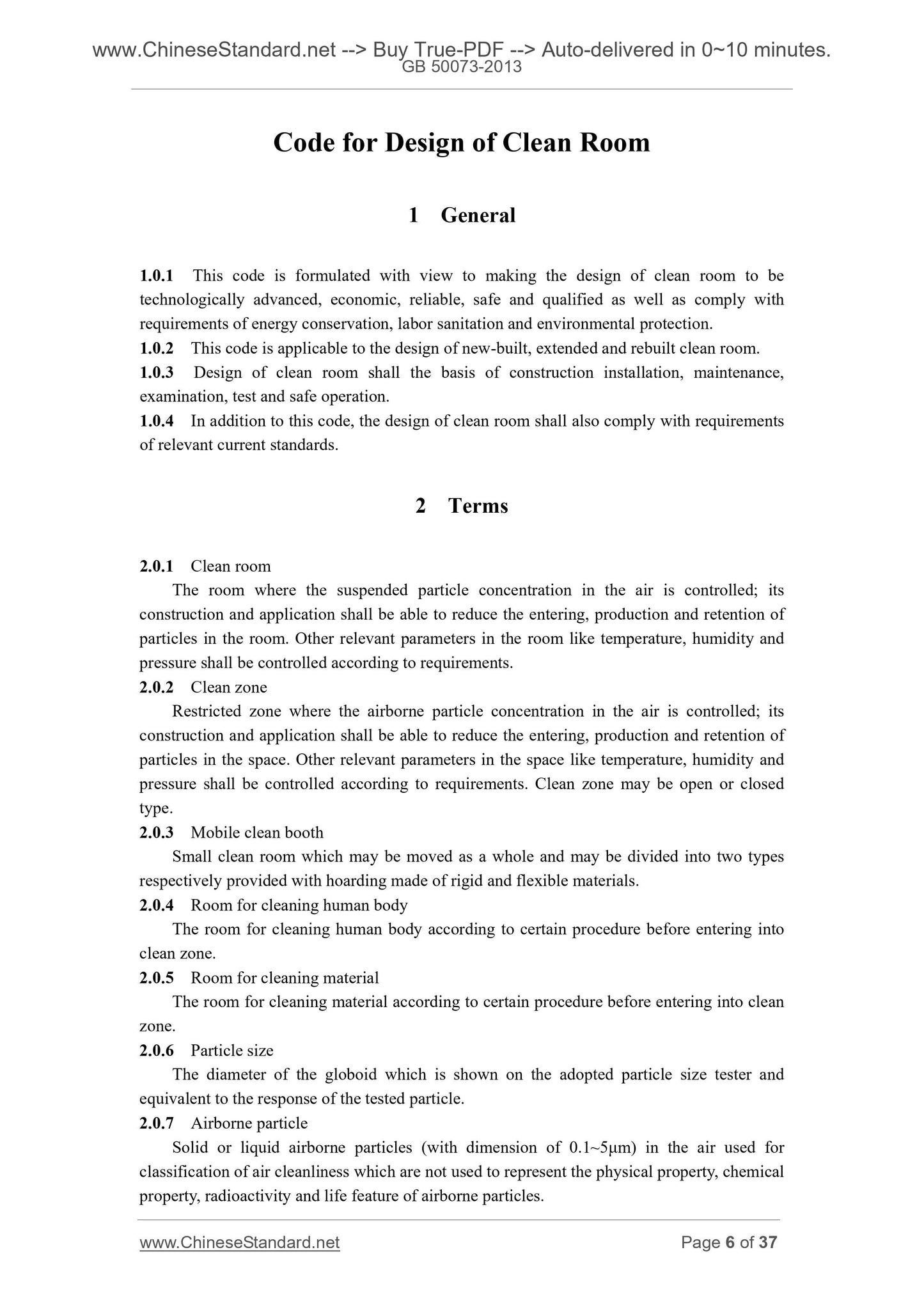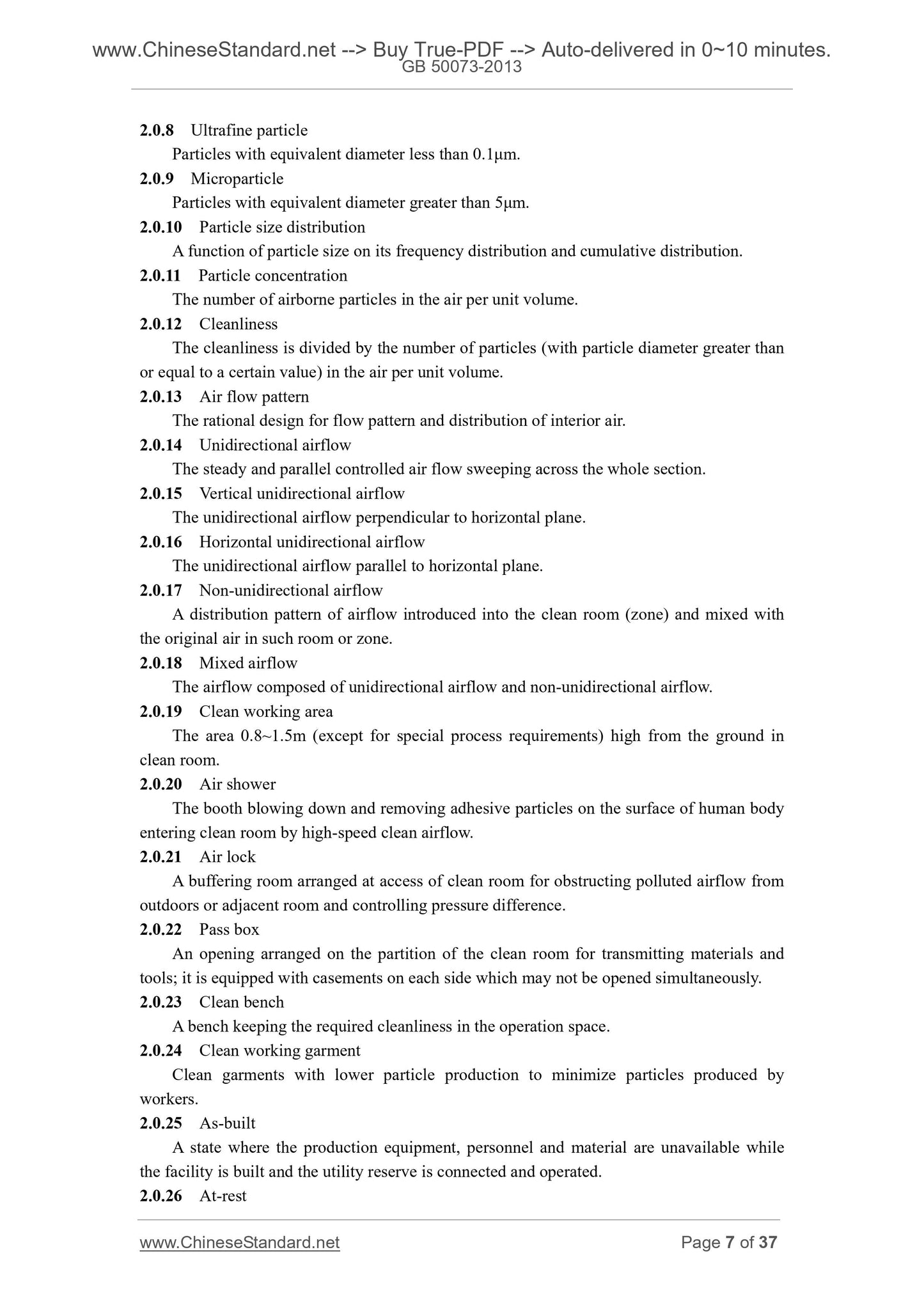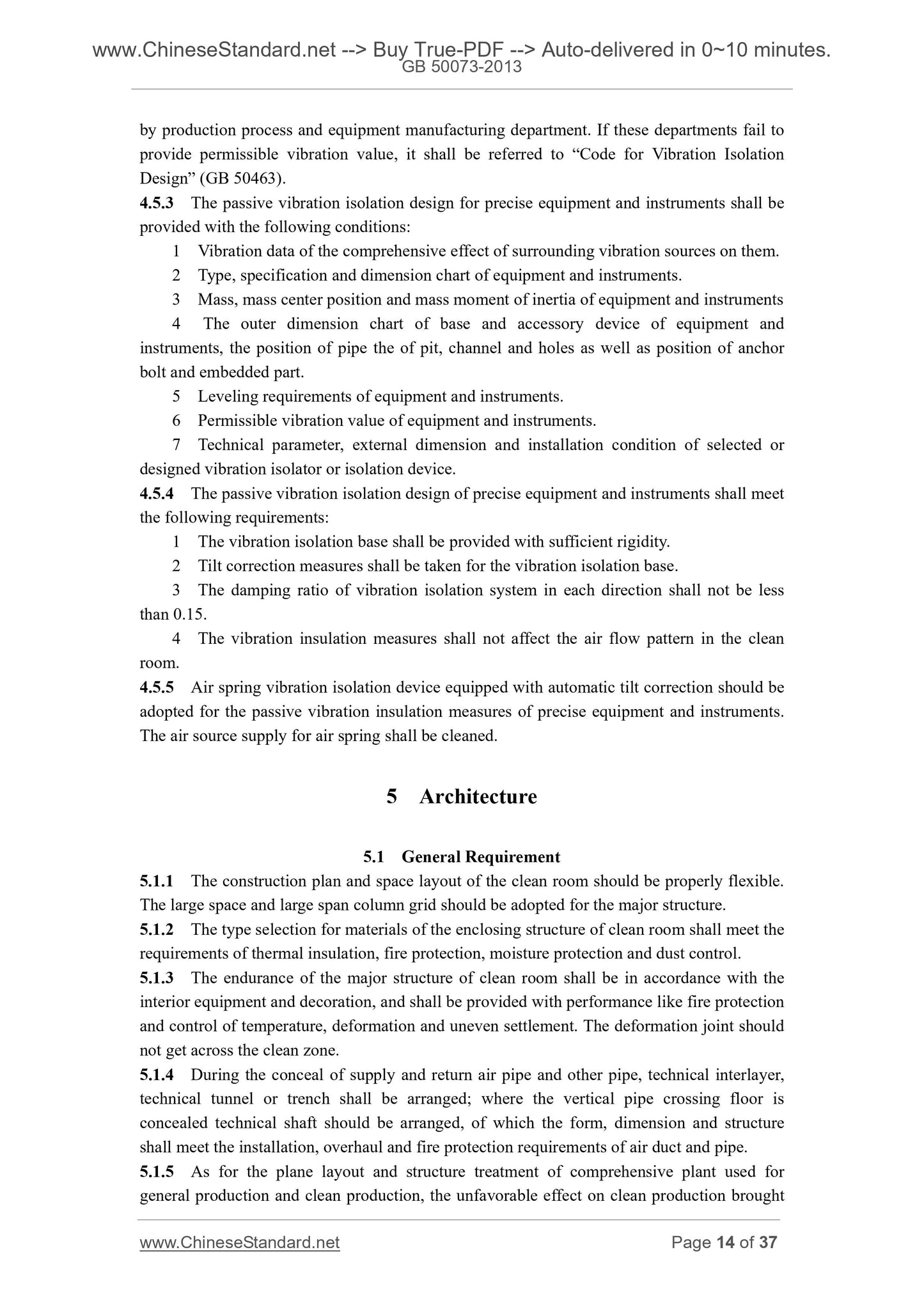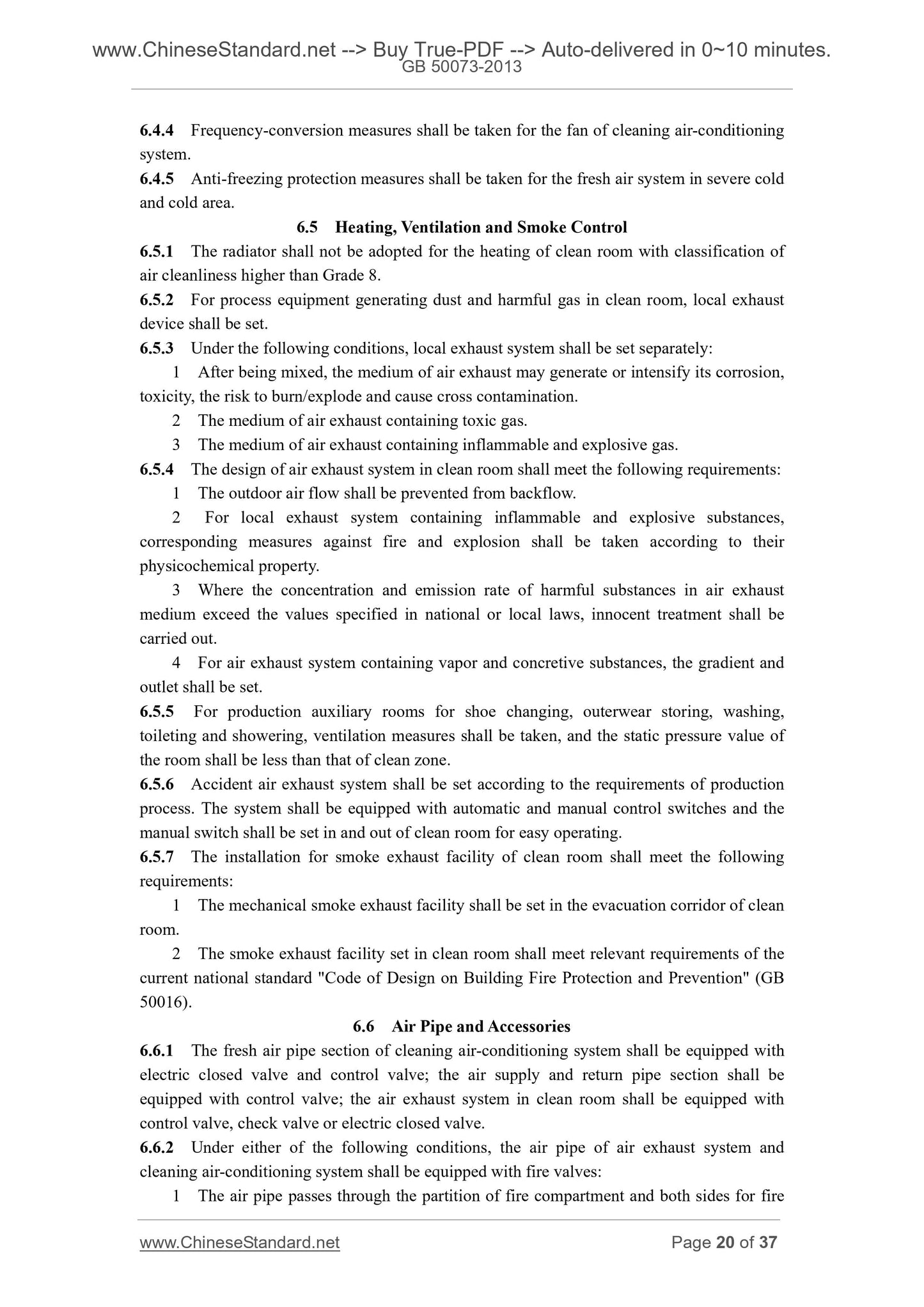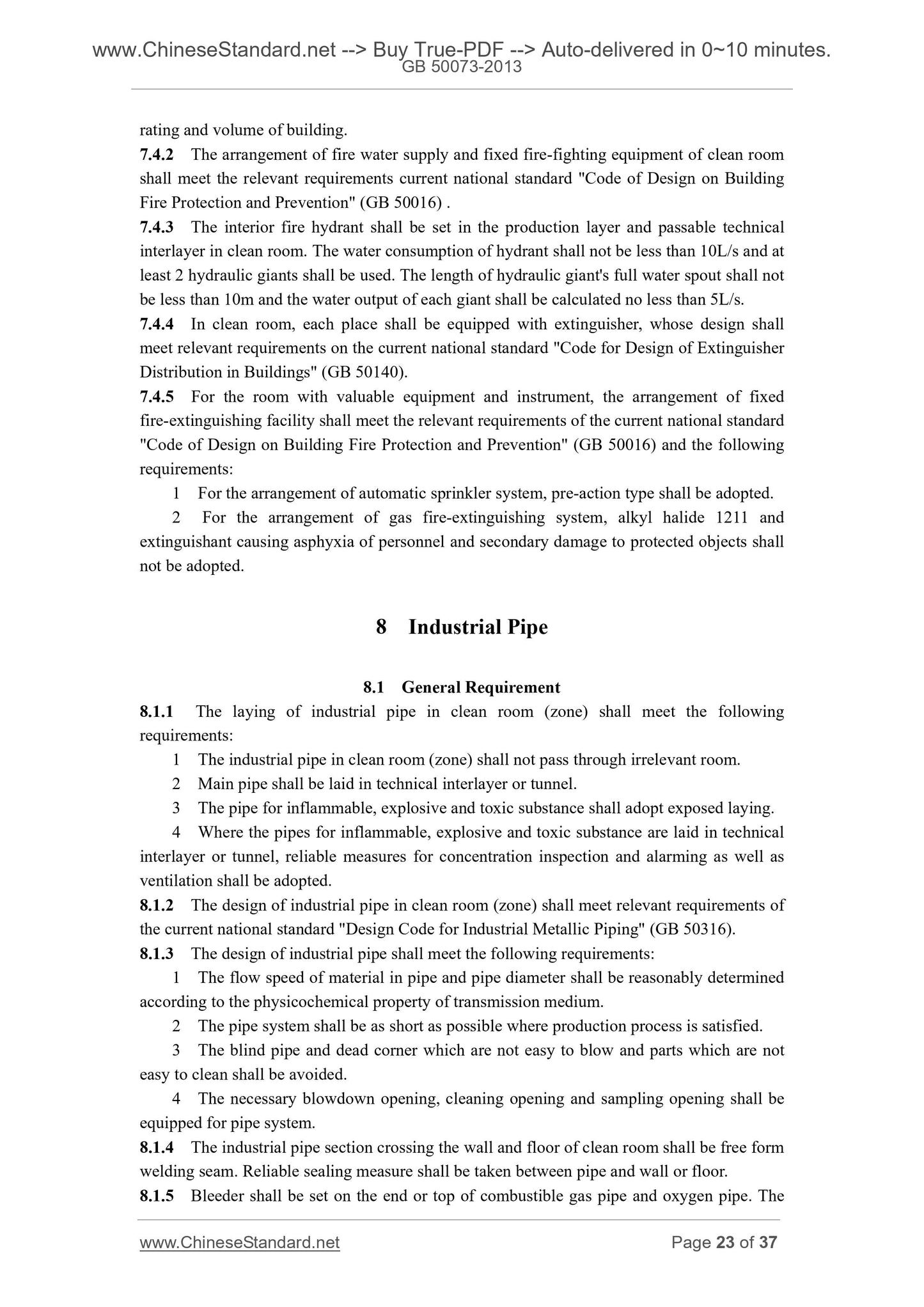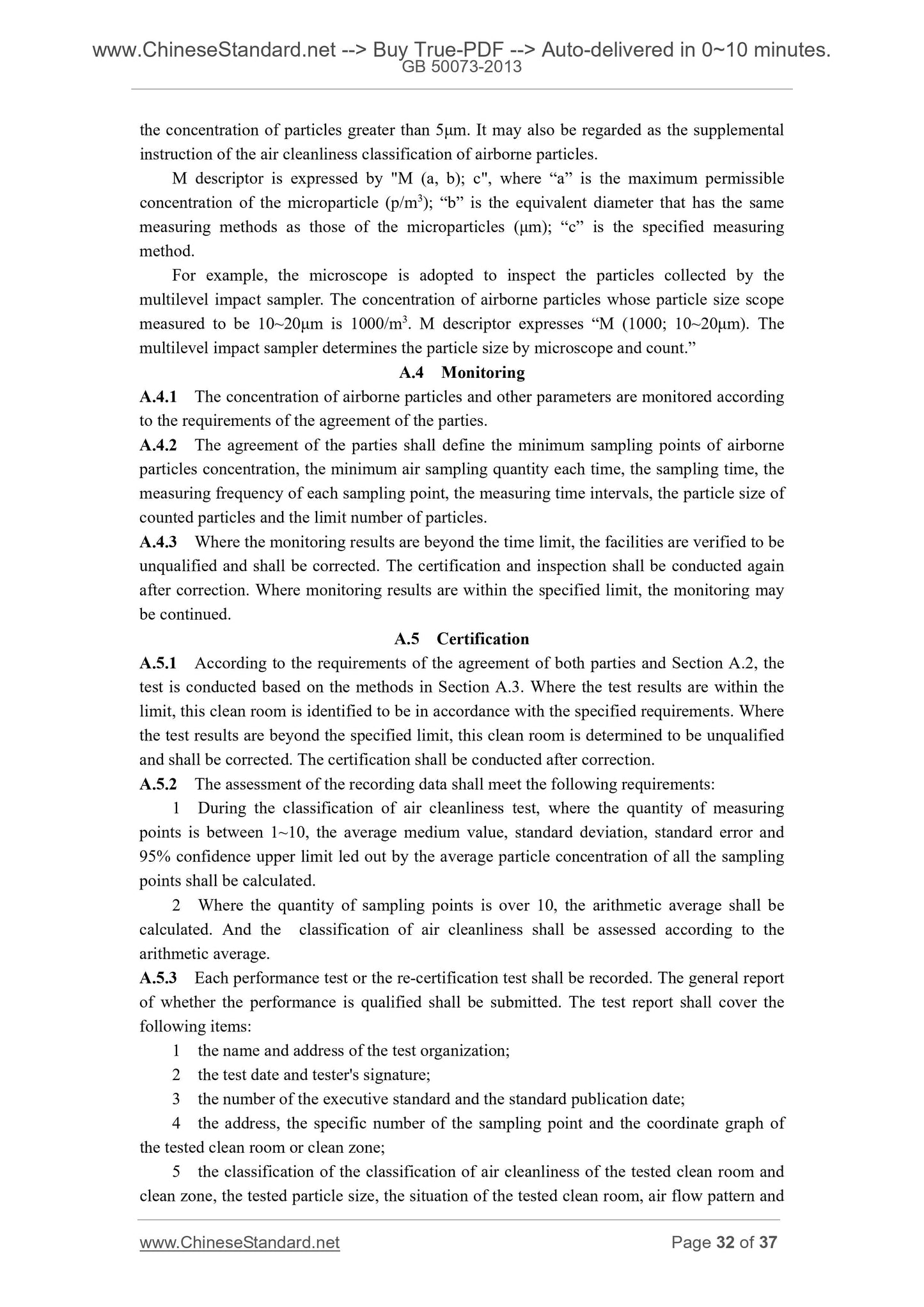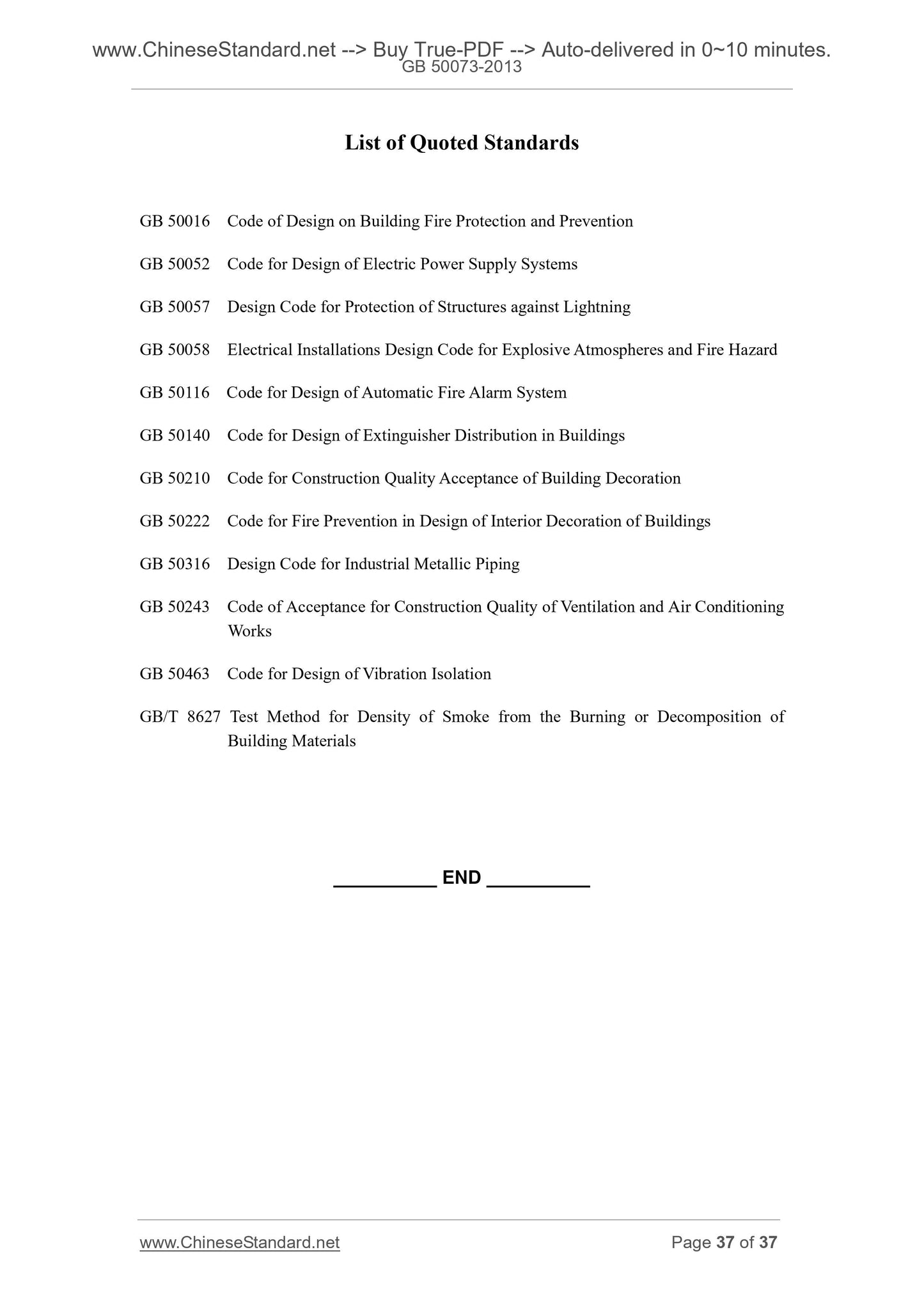1
/
of
9
www.ChineseStandard.us -- Field Test Asia Pte. Ltd.
GB 50073-2013 English PDF
GB 50073-2013 English PDF
Regular price
$135.00
Regular price
Sale price
$135.00
Unit price
/
per
Shipping calculated at checkout.
Couldn't load pickup availability
GB 50073-2013: Code for design of clean room
Delivery: 9 seconds. Download (and Email) true-PDF + Invoice.Get Quotation: Click GB 50073-2013 (Self-service in 1-minute)
Newer / historical versions: GB 50073-2013
Preview True-PDF
Scope
1.0.1 This code is formulated with view to making the design of clean room to betechnologically advanced, economic, reliable, safe and qualified as well as comply with
requirements of energy conservation, labor sanitation and environmental protection.
1.0.2 This code is applicable to the design of new-built, extended and rebuilt clean room.
1.0.3 Design of clean room shall the basis of construction installation, maintenance,
examination, test and safe operation.
1.0.4 In addition to this code, the design of clean room shall also comply with requirements
of relevant current standards.
Basic Data
| Standard ID | GB 50073-2013 (GB50073-2013) |
| Description (Translated English) | Code for design of clean room |
| Sector / Industry | National Standard |
| Classification of Chinese Standard | P34 |
| Classification of International Standard | 91.040.20 |
| Word Count Estimation | 120,132 |
| Older Standard (superseded by this standard) | GB 50073-2001 |
| Quoted Standard | GB 50016; GB 50052; GB 50057; GB 50058; GB 50116; GB 50140; GB 50210; GB 50222; GB 50316; GB 50243; GB 50463; GB/T 8627 |
| Regulation (derived from) | Ministry of Housing and Urban-Rural Development Announcement No. 1627 |
| Issuing agency(ies) | Ministry of Housing and Urban-Rural Development of the People's Republic of China; General Administration of Quality Supervision, Inspection and Quarantine of the People's Republic of China |
| Summary | This standard applies to newly built, expansion and renovation clean room design. |
Share
